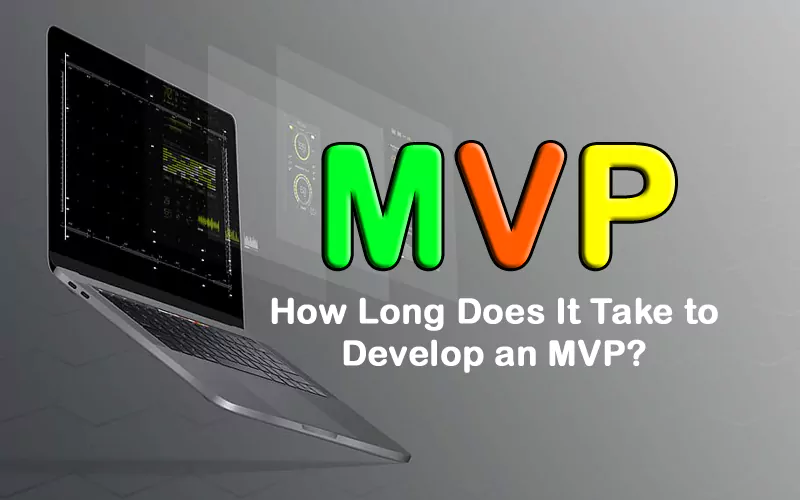
If you decide your business needs a website or an application, you’ll face the following questions: who will produce a new service or product, how much time MVP development takes, how much will it cost, and how to cut the price and time for development?
If you know nothing about the development process, you’ll be surprised by the actual terms. After all, Google promised you a week or two! Let’s figure out how long it takes to develop and launch your MVP product.
How to Create an MVP?
All MVP developers offer to go through the 9 stages, regardless of the type of MVP. You can group these stages into several categories:
- Project goals
For example, to create a mobile application or MVP of a product, check how much it is needed in the market. NoCode development is perfect for this; in this case, you don’t have to spend time and money writing code. Go into the details. You can write specific hypotheses so the performers can immediately orient themselves on the necessary tools.
If you have an existing business and want to automate processes, write down what metrics you want to improve and by how much. You can calculate the return on these investments after learning the development cost. And specialists working on the project will understand what and why they do it.
- Design and technologies
What technologies do you want to use? For example, you can describe the programs/services you need for integration or indicate that you wish to use NoCode development or regular code. If you decide that node js websites option is the best solution for your product, you shouldn’t skip it. Of course, you can simplify the product, but it must be convenient and functional.
If there are no preferred ideas, leave the field empty. After all, you turn to specialists, so you don’t have to consider the complexities.
What to Pay Attention to Creating an MVP?
In addition to drawing up the MVP concept and monitoring the performance of all necessary actions, the development team is recommended to focus on the following points in the future:
- Spend as little money and other resources as possible. Otherwise, the whole point of creating an MVP is lost.
- Determine the simplest type of MVP suitable for your business to test your idea. Stick to it, and don’t try to change the type of MVP “on the go,” otherwise there will be no savings.
- Remember to focus on reviews: use all communication channels to find and recruit first users.
- A little more about feedback: constantly talk to your users. Do this regardless of what stage of work you are in and continue the conversation even when you have finished testing the MVP and are moving on to creating the first version of your product. Extend your previous practice with the help of A/B testing or other methods.
- Try to pre-sell the product on crowdfunding platforms or sell it directly. This is an excellent way to hear an independent opinion about the product and, if lucky, get money for further development.
What Information to Prepare for an MVP Developer?
When talking about the launch in a few weeks, you will only be talking about MVP – a minimally viable product with minimal necessary functionality that has value for the user. Publishing an application or creating a site in this format will test your idea and check whether your audience needs a mobile service or a sufficiently adapted site version.
To develop the product as quickly as possible, the customer needs to clearly understand what he wants to get as an output, why this service will be required, and what goals must be achieved with its help. It is excellent if you have a fully developed description of the business logic and functionality of the future MVP in any form – specification, text-graphic description, low-level mock-ups of screens, or clickable prototypes. Any such materials will allow you better to synchronize the interaction between you and the development team.
How to Optimize Process Management?
Generally, the processes can be carried out in any way: in a series, sequence, and parallel. Different companies use different approaches. A canonical story is first a specification, then a design. And several teams make the design and then work out the layouts. The design is a primary condition for the customer and the development team. And it is meaningless to argue that, in this case, it is better or worse – you need to evaluate the result.
MVP development can be started even before the technical task is completed. This corresponds to the principle of a flexible approach, which many progressive developers apply in their work.
This allows only working out part of the logic of the service at the initial stage (if there is not a significant amount of time and resources for the task) but to preparing the technical task, design, and conducting development in iterations.
What Risks Should Be Taken into Account?
Often, together with the shortening of the start-up period, there is also the task of reducing the cost of implementation. To launch an MVP, the uniqueness and detail of the design may need to be addressed. The developers spend less time designing the interface and use some ready-made components. The main task is to develop high-quality functionality rather than visual development.
This only sometimes happens. Of course, there are projects where design is also essential. The team tries to balance a minimum workable product and a more complex solution.
What Are Real Launch Dates?
It’s time to answer your main question: you can make only a prototype or adapt a ready-made solution in two weeks. When talking about real cases of releasing a product to the market, you’ll spend about 2-3 months or more, depending on the content of the service, requirements, and final functionality. If you have any questions or a product idea, SECL Group experts are ready to discuss it in detail.






